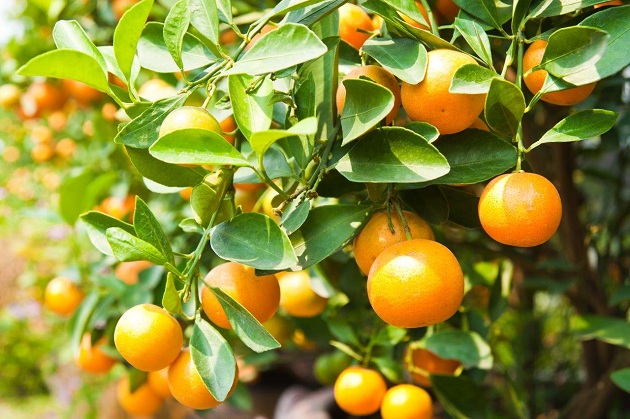Citrus trees are some of the most common fruit tress that can be found in Australian gardens. Warm climate is the most important factor that contributes for this type of trees with shiny leaves and fragrant flowers to thrive in our country. However, this doesn’t mean that growing such plants in your yard or garden is easy. On the contrary, growing citrus trees can be quite the challenge as these plants need to be exposed to sunshine at least five hours a day, are prone to pests and have special watering requirements.

If you are interested in growing lemon, lime, orange, grapefruit or mandarin trees in your garden, let’s start from the beginning and go through the basics of growing these both ornamental and productive trees. Below, we’ve compiled a list of the four most important tips you need to stick to in order to ensure a success in this unique gardening experience.
Position
As we said before, citrus trees depend heavily on the level of sun exposure. Therefore, position them having in mind their sunlight and heat needs – place them in a sunny and warm location in a north-facing position. If you are growing the plants in pots, during cold winter days you can bring the pots inside and place them along a big window or a glass door.
Watering
Citrus trees need infrequent, yet fast-draining watering. Hence, the two most important factors that you need to pay attention to is the type of soil you’ll be using and the holes on the bottom of the pots. For these trees, adequate watering means water draining within maximum of thirty minutes, no more no less as the longer the water remains in the soil- the higher the risk of collar rot and fungal diseases. For that reason, choose soil that drains quickly and buy pots with more holes.
Pruning
Unlike most fruit trees, citrus plants don’t have special pruning requirements to produce the expected amount of fruit. Still, you will need to remove dead branches from the tree in order to keep it looking good. Also, removing a portion of the inner branches of the trees improves the air flow within the plant and reduces the risk of certain common diseases.
Dealing With Common Problems
The two most common problems you are likely to face when growing citrus trees are:
Yellowish Leaves
this condition may happen as a result of iron deficiency, inadequate and improper nutrient composition as well as lack of warmth. To deal with this condition, what you need to do is enrich the soil with sulphur, iron chelates and other soil additions intended for citrus fruit plants.
Citrus Leafminer and Bronze Orange Bugs
These are small insects that harbor in the leaves of citrus plants. To prevent these insects from destroying the leaves of your citrus tree, make it a point to spray the leaves with eco oil on a regular basis, from spring to autumn.


